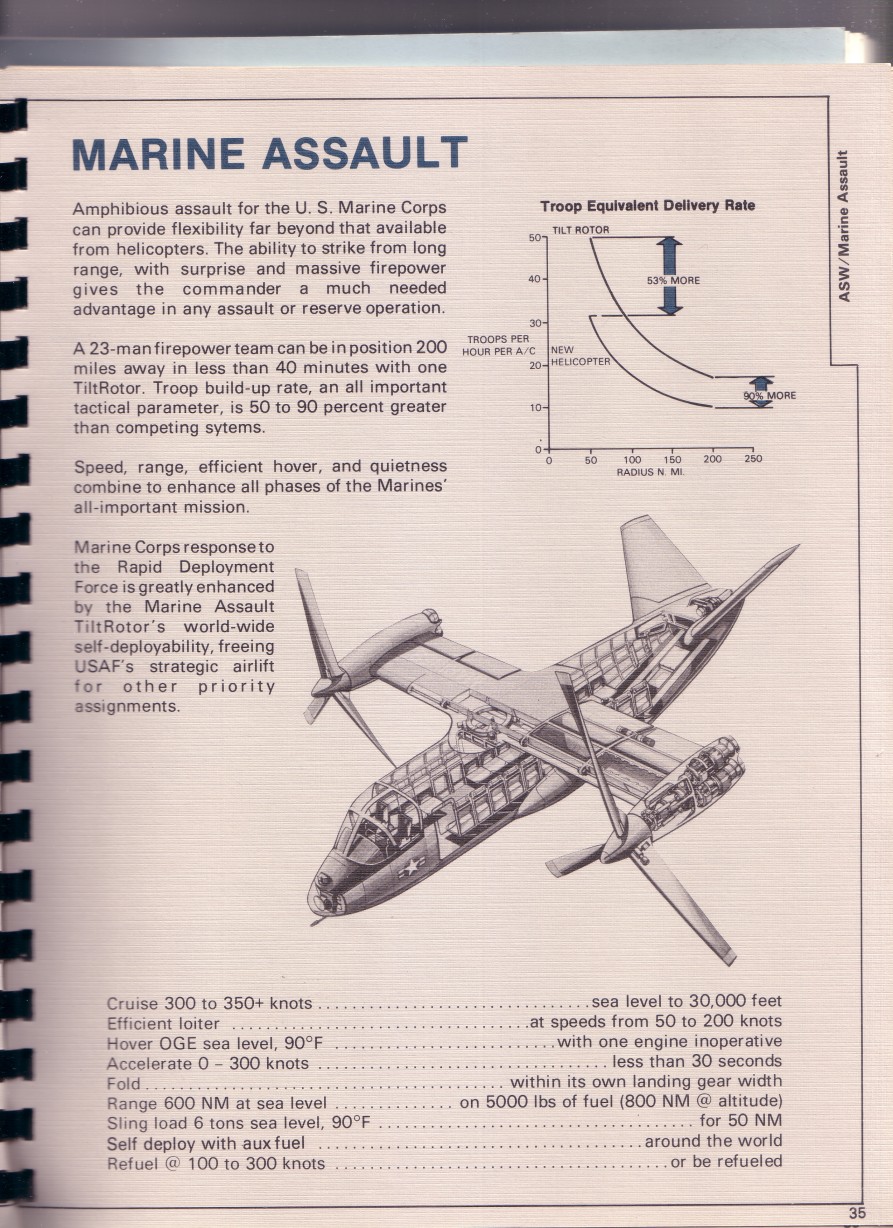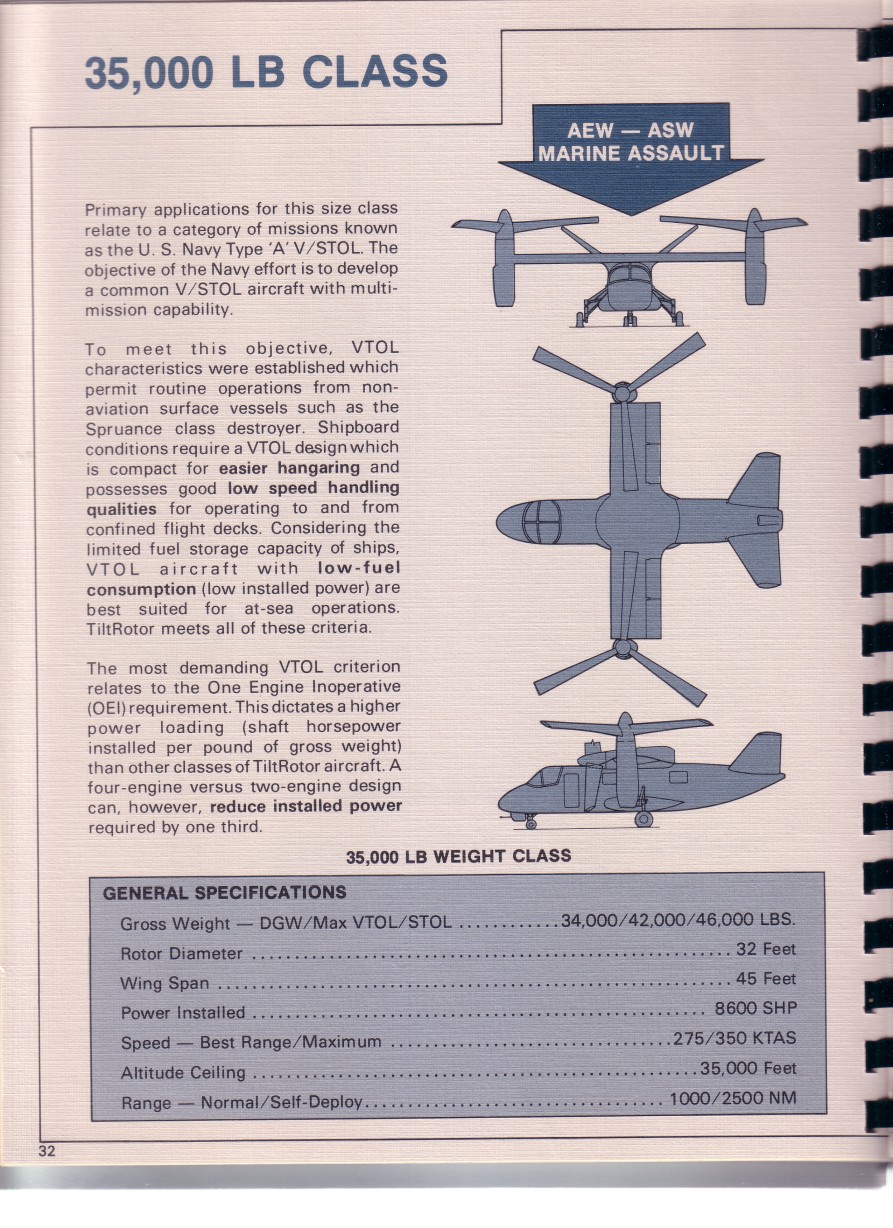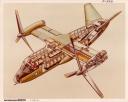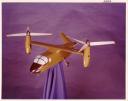Nov 202009
A predecessor to the V-22, the D-323 was quite similar in both design and function. Equipped with four engines rather than two, it still drove two tilt rotors; the tail was a V-tail rather than the V-22’s H-tail. A gun turret was fitted under the nose. The date is uncertain, but probably late 1970’s. Other illustrations from the same brochure show photos of the XV-15 in flight, so it couldn’t date before 1977.
From the Jay Miller collection.

If you like this sort stuff I post, you can support the cause by Buying My Stuff, which includes aerospace drawings and documents, as well as the journal of unbuilt aircraft and spacecraft projects, Aerospace Projects Review. Or you could just Donate.
3 Responses to “Bell D-323 Tiltrotor”
Sorry, the comment form is closed at this time.




It dates from 1979.
It, and a whole slew of other Bell VTOL designs here:
http://www.aiaa.org/tc/vstol/unbuilt/bell_tlt/index3.html
That’s from here: http://www.aiaa.org/tc/vstol/
I loved the Osprey from the first time I saw one. Having operated from UH-1s and Chinooks, I always yearned for something with more,,,,,ass, as it were. And no, I’m not a pilot, though, in an emergency I would give it one hell of a try!
I know 2 pilots who transitioned from fixed rotor ships to Osprey, and they claim that many of the operational problems that led to crashes came from taking pilots trained in fix rotor flight and putting them into tilt. The two simply do not fly the same. They say that the trained reflexes from flying Slicks and Sea Stallions get you killed in an Osprey. And the powerplant issues seem to have finally been fixed with the change to beefier engines.
Based on some of the Osprey criticisms, it looks like the original chin turret should have stayed in the final Osprey.
The four-engine layout looks neat, but the final two-engine Osprey is probably more reliable. I can see the four-engine Osprey running into Skyshark-type problems with the gearbox and all the other myriad parts that would be required to transmit shaft horsepower from the engines to the rotors.